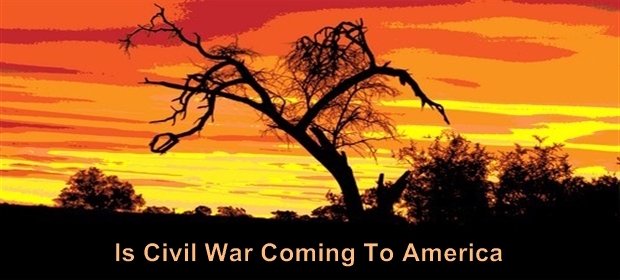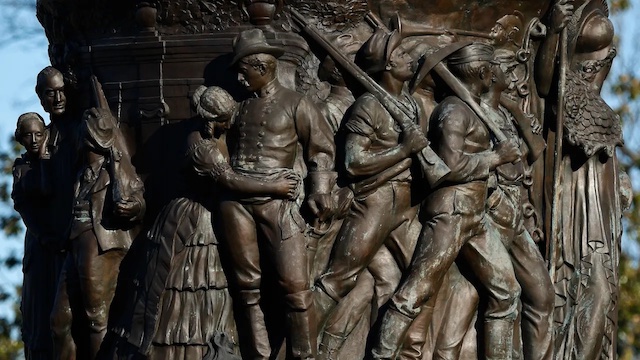 The best single description of civil war I have ever encountered is a scene from Ernest Hemingway’s “For Whom the Bell Tolls.” Set during the Spanish Civil War, a Spanish woman loyal to the Republic named Pilar describes the first days of the war. For two dozen pages, she describes the murder of her hometown’s most prominent fascists after declaring for the Republic. She finishes the story by calling it “the worst day of my life until one other day,” then states that the worst day was when the fascists took the town three days later.
The best single description of civil war I have ever encountered is a scene from Ernest Hemingway’s “For Whom the Bell Tolls.” Set during the Spanish Civil War, a Spanish woman loyal to the Republic named Pilar describes the first days of the war. For two dozen pages, she describes the murder of her hometown’s most prominent fascists after declaring for the Republic. She finishes the story by calling it “the worst day of my life until one other day,” then states that the worst day was when the fascists took the town three days later.
The recently released trailer for “Civil War,” an upcoming movie from indie studio A24, has spurred discussion about a hypothetical civil war in America. The trailer follows a former conflict journalist, played by Kirsten Dunst, as she and her crew try to make sense of a country plunged into uncertainty and chaos when 19 states secede.
Details of the movie’s plot are sketchy. But a promotional map shared on the platform formerly called Twitter breaks the U.S. into five factions: Western Forces comprised of the northwest and manifesting an Idaho militia vibe; republics in Texas and California (California appears to be allied with the Western Forces); the “Florida Alliance” made up of some of the former Confederacy; and the remaining “Loyalist” states.
The map is fantastical in more ways than one. The disunited states would never shatter so cleanly. Lines, especially those demarcating nations, are rarely clean during war. A civil war in the United States in 2024 would be a giant yellow-colored map speckled with spreading blotches of blue and red.
The first and most urgent mission of any secessionist movement is securing its own territory, not marching outward. And that’s very difficult, even for a government under normal circumstances.
Think about it this way. You’re the leader of a secessionist state. You raise a militia or fall in on military units that defect to you. Is your first action bringing that military elsewhere to fight? Or securing your own territory, to which you have a tenuous and contested claim, and which is objectively very difficult to do in any organized sense of things?
It’s obviously the latter.
Take Georgia as an example — a state that has seceded in the past, and secedes again in the movie. Secession would plunge it neck deep into a massive, bloody, state-wide battle between those seeking to uphold secession and those hoping to remain part of the U.S.
On a map, Georgia is considered a “red” state — but look closer and it’s not so clear. Fort Moore (formerly Benning) is a massive federal military installation in the northwest of the state, hosting tens of thousands of troops from around the country. Savannah is near another large base, on the Atlantic Ocean. Atlanta is politically dissimilar from the countryside, has over 6 million people in the state’s northwest — and nearby is Hartsfield-Jackson International Airport, the primary hub and home base for Delta Airlines.
Assume one could muster the military force necessary to take and hold Atlanta — hundreds of thousands strong, at least, who all need to be fed, equipped and resourced — or to surround Atlanta and bring it under siege, without worrying about threats from Savannah or Fort Moore. This process would take months at least and result in heavy casualties and entail starvation among a civilian population.
This would be the rule, not the exception, across America within states that seceded, and in “loyalist” states with their own restive territories. Bitterly contested conflicts would rage across much of the continental U.S. as competing groups consolidated power, with massive populations in every state rejecting the decision to stay loyal to the U.S. or rejecting the decision to secede.

A detail view of the bottom half of the Confederate Memorial, which is being dismantled and removed from Section 16 at Arlington National Cemetery on December 20, 2023 in Arlington, Virginia. (Photo by Chip Somodevilla/Getty Images)
The war would be difficult on its own terms; moving militaries even under ideal conditions in peacetime (good roads and infrastructure, good logistical support) is no small thing. I can tell you that, as a company executive officer (XO) in the U.S. military, responsible for organizing the logistics for 142 paratroopers and all their weapons and equipment, it is a great mess of inconveniences and problems that becomes exponentially more difficult the more people are involved.
If being a company grade XO is bachelor’s degree work, battalion and brigade grade XO work requires a master’s degree, and divisional and corps grade XO work requires a PhD or equivalent. Offensive operations of the type needed to seize territory and defeat hostile armies are complex, and few countries today field militaries capable of carrying out maneuvers with or without defensive pressure. In a civil war, such maneuvers would be under continuous harassment from insurgents and hostile forces.
The war part of the civil war would be the most urgent challenge, but every seceding group would also have to stand up new structures to replace those lost by the sudden absence of the federal government. Significantly, these states would need to reinvent government capable of organizing their populations for war. They’d need to initiate diplomacy to lobby for external assistance.
But there are more mundane considerations. If the war took place during the summer, Southern states such as Texas, Alabama, Georgia and Florida would need to keep an eye on hurricanes; California on wildfires. Without FEMA, these fledgling governments would be fully responsible for shouldering the burden of damage.
Though a civil war can feel frighteningly possible in the U.S. in 2024, it remains extremely implausible. These wars are by far the hardest and bloodiest, and no sane American would trade a Biden-run or Trump-run government for months or years of war, starvation, environmental catastrophe and plague — let alone the social costs that would be incurred by the victor.
Written by Adrian Bonenberger for The Hill ~ December 24, 2023

Georgia is in the Florida Alliance but not SC? Know/haven’t heard of any election rigging in SC yet – GA? Meh
When the Bolsheviks came to the Soviet Union to initiate assassinations and coups, the Russian realm numbered 150 million people in 1917. At the time of the Revolution there were only 200,000 members of the Bolsheviks who ultimately took control over 150 million….. for 70 years
A reporter is covering a story in a country where a brutal dictator has just been overthrown. He comes to a village, and finds one resident who shrugs off the whole thing as unimportant.
“But … you’re free! The dictator has been overthrown!” the reporter points out.
“The Dictator … his men come and steal my chickens,” the old man says. “The Rebels … they come to town and steal my chickens. Nothing ever changes – only the name of the man who steals my chickens.”
Plus ça change, plus c’est la même chose.